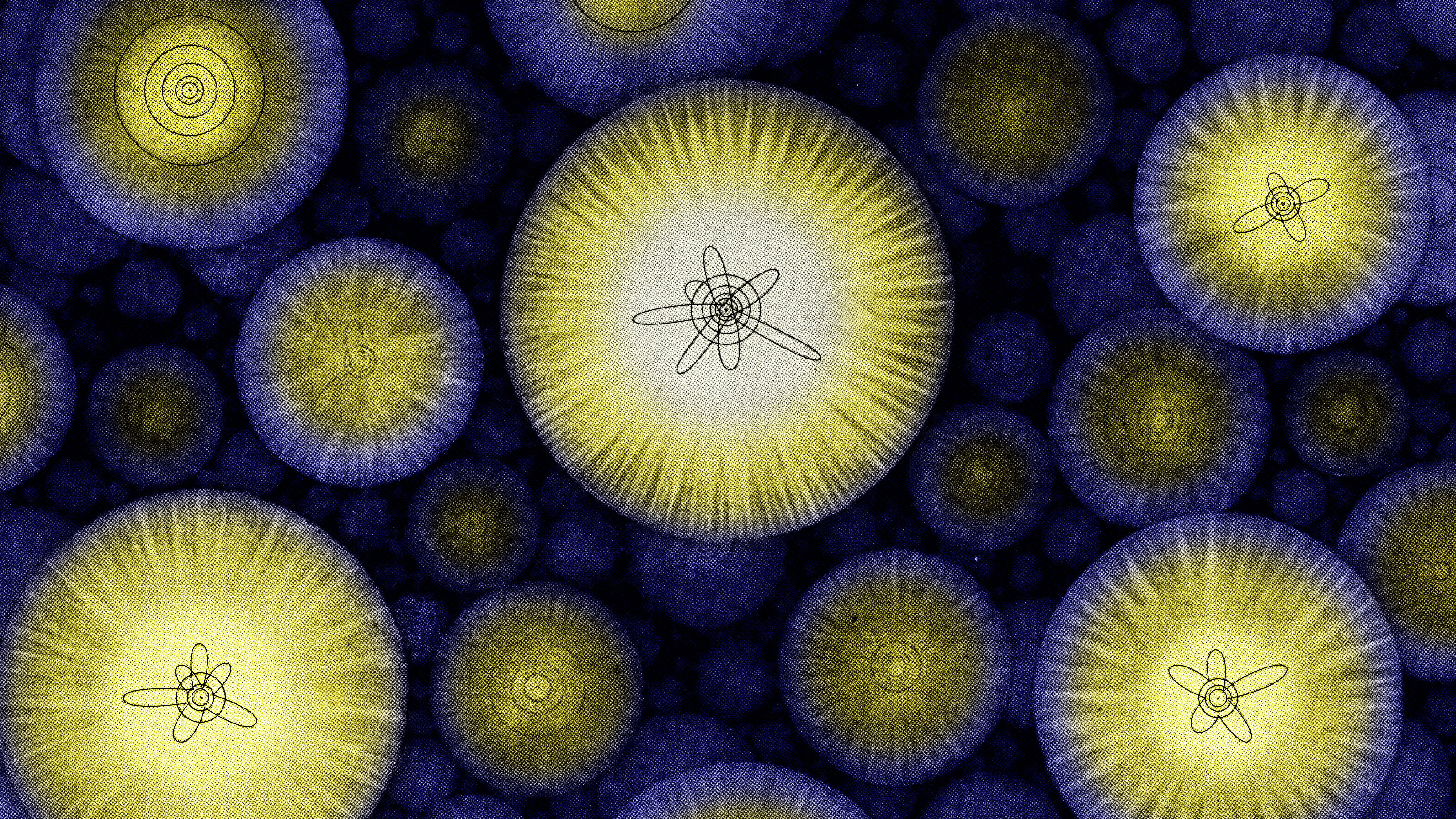It’s Time To Retire The Super-Earth, The Most Unsupported Idea In Exoplanets

Planets are either rocky, like Earth, or gas-rich, like Neptune, with no in-between.
What are the different types of planets that exist in the Universe? If all you could see was our Solar System, you might argue that there are two. One category includes us: the inner, rocky, terrestrial planets, with low masses, compact sizes, and thin, almost negligible atmospheres compared to the rest of the planet. The other clearly doesn’t, but includes the four giant planets in our Solar System: the outer, large, gas-rich planets, with large masses, extended sizes, and thick, volatile-rich atmospheres that extend down a significant fraction of the planet’s overall radius.
But when NASA’s Kepler mission opened its eyes on the Universe, it found much, much more than what exists in our Solar System. Among the more than 4,000 confirmed exoplanets we know of today were not just these two types of worlds found in our Solar System, but two others. There were the super-Jupiters, significantly greater in mass than all of our Solar System’s planets combined, and what we began calling “super-Earths,” or planets in between the sizes and masses of Earth, the largest and most massive terrestrial planet, and Uranus/Neptune, the smallest and least massive giant planet.
Today, approximately a decade after those initial discoveries were revealed, it’s finally time to kill the idea of the super-Earth: a planetary phantasm where all the evidence is against their entire existence.

Of course, these exoplanets really do exist; nobody is disputing that. In fact, when we classify the exoplanets that we’ve found thus far, lumping them together by either mass or radius, we find that exoplanets in between Earth and Neptune are more common than exoplanets of any other variety. Because of the lack of such a world in our own Solar System, many had initially speculated that this new category of exoplanet, unlike anything we know of here at home, could represent either of two new potential populations.
- Super-Earths: the worlds that are larger than Earth, but still like Earth, with rocky surfaces, thin atmospheres, and the potential to — with the right conditions — have water existing in the liquid state on those surfaces.
- Mini-Neptunes: the worlds that are no longer like Earth, with large, volatile gas envelopes surrounding the world on all sides. If you have a thick atmosphere rich in volatiles — things like ammonia, methane, various ices, and raw hydrogen and helium — the pressure and temperature gradients are so severe that by the time you get to the surface, the biological and chemical processes that we know of can no longer occur.
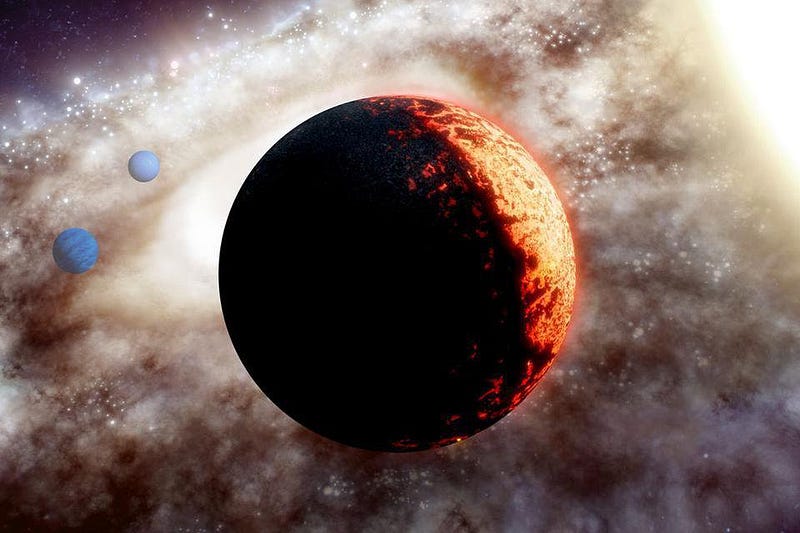
So, then, what was the impetus, early on, for calling them “super-Earth” exoplanets rather than “mini-Neptune” exoplanets?
In the absence of evidence, it was simply wishful thinking. It was a clever name and a clever idea, but it brought along an enormous amount of baggage with it: the assumption that all, many, or at least some of these in-between worlds really were more like Earth than they were like Neptune. And while this was an understandable assumption to make, it was also one that wasn’t necessarily true, as either Earth or Neptune or anywhere in between the two could have marked the point where the transition from one type to another occurred.
We knew, based on evidence from protoplanetary disks, from star-forming regions all throughout the Milky Way, and from the compositions of molecular gas clouds, that the regions where new stars (and their planetary systems) formed are rich in these volatile compounds. In fact, it’s only when nuclear fusion begins in the proto-star’s core — a process that can take tens of millions of years to complete — that the radiation from the new star is sufficient to “boil off” the volatile compounds from the young Solar System. That’s plenty of time for these newly forming planets to gravitate, grow, and attract this material onto the underlying protoplanet.
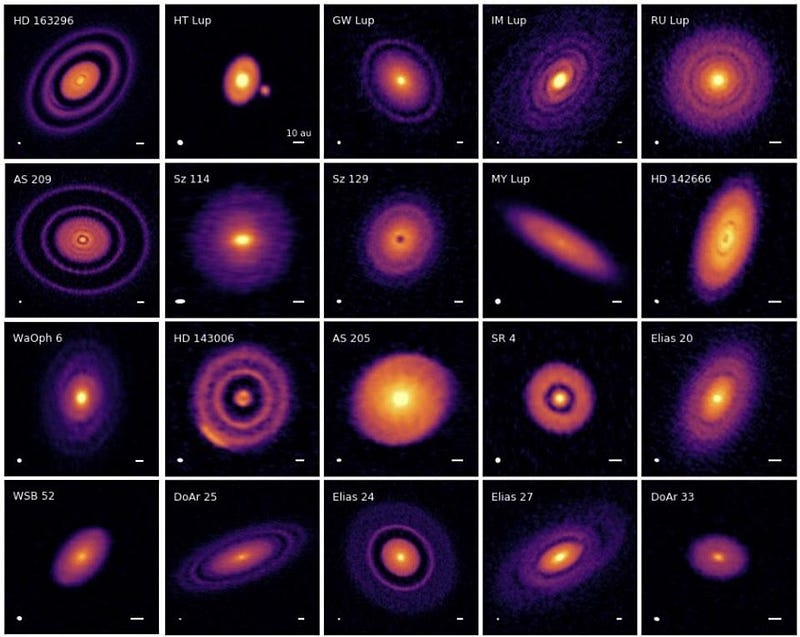
Because there are so many opportunities for forming planets in our galaxy, as well as in the greater Universe, we expect there to be a “mainstream” scenario, that describes the most likely outcome of planet formation, followed by “exceptional” scenarios, which encompass everything else.
Believe it or not, there are only three main factors that ought to determine what types of planets we wind up with in any given Solar System, at least for the mainstream case. Assuming that you begin forming one or more stars in your system, and that the remaining material exists in a disk-like shape, consistent with observations, we fully expect that planetary growth will be a race between the following three factors.
- The initial overdensities in the protoplanetary disk. These overdense regions will gravitationally grow, accreting the matter from their surroundings as quickly as possible.
- Competition from the other planetesimals. Wherever you have an overdense region in the protoplanetary disk, it’s going to have to “win” in order to survive. Winning, in this case, means growing large enough to survive and clear your orbit. To gain enough mass quickly enough, that means the various overdense regions compete with one another in a cosmic game of “hungry, hungry planetesimals,” attempting to gain as much mass as quickly as possible.
- The intensifying radiation and winds from the central star. Once nuclear fusion turns on in the central core of the newly forming star(s), radiation and winds will both blow the planet-forming material away, leaving only the fully-formed planets behind, and is capable of boiling/sublimating away any volatiles that aren’t held to their parent planet strongly enough.
In theory, that should lead to four main possible outcomes.
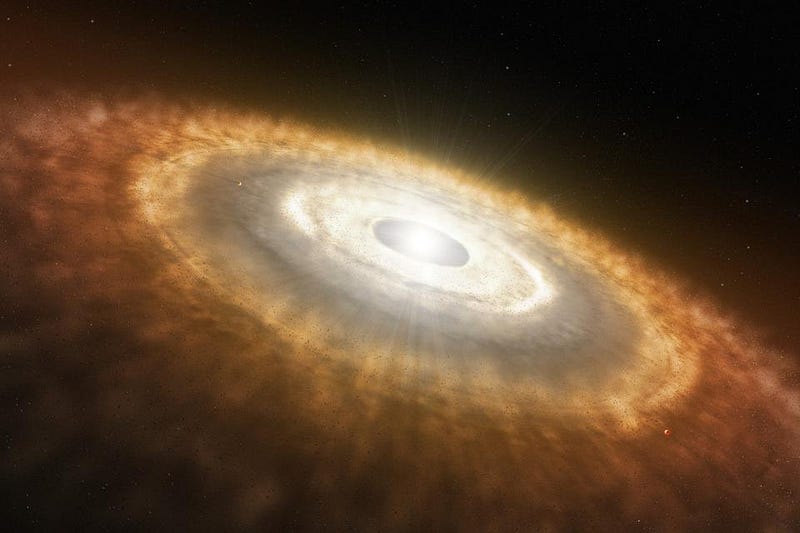
The biggest winners, of course, are the overdense regions that accumulate the greatest amounts of mass of all: enough to form a true star. If you can attract at least 70-to-80 times the mass of Jupiter into one single object, you’re going to form a star: an object massive enough that once it finishes contracting and heating up, its core temperature will exceed 4,000,000 K, or hot enough to begin fusing hydrogen into helium.
If you’re less massive than that, however, you’ll have to settle for being either a giant planet or a brown dwarf star: hot and massive, but incapable of achieving those key fusion reactions that take place inside true stars. However, with enough mass, you not only can hang onto a volatile-rich gas envelope, but your entire structure will undergo gravitational self-compression: where the very atoms inside the planet compress to smaller-than-normal size owing to the sheer amount of mass packed into one place. Jupiter is one such planet; despite being three times the mass of Saturn, it’s only ~15% larger, as its atoms are gravitationally compressed.
Below that threshold, however, you can still be massive enough to grow to a giant size, hanging onto a thick envelope of volatile gases, but you won’t be able to undergo gravitational self-compression; your atoms will only be normal-sized. Our planets Saturn, Uranus, and Neptune all fall into this category, but “hot” versions have also been seen to exist around other stars.
And finally, on the lowest-mass end, there are the rocky, Earth-like worlds. This includes the four inner planets of our Solar System as well as most of the larger moons and dwarf planets. Without enough mass to prevent solar radiation and solar wind particles from stripping those light elements and compounds away, only a thin atmosphere is capable of remaining.
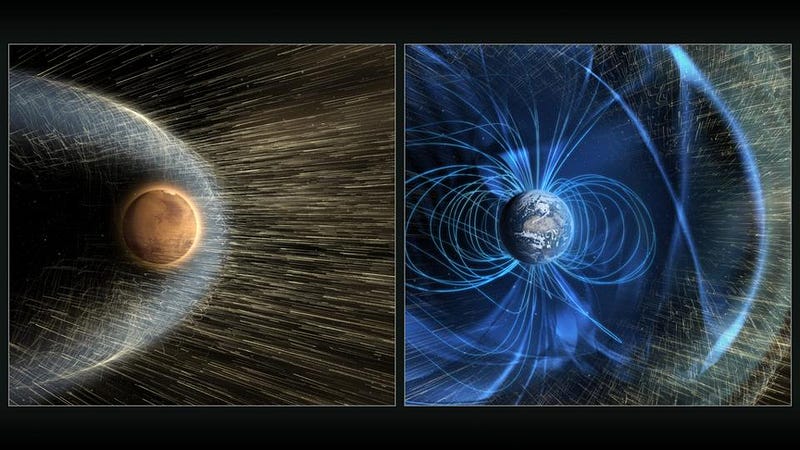
Those are the outcomes we’d expect, but there can be exceptions. For example, you could have initially formed with enough mass to accumulate a thick, volatile envelope, but then — either because your parent star is too luminous or you’re too close to it — those volatiles could boil away, leaving only an exposed, rocky core (perhaps with a thin, dense atmosphere) remaining. A planet with these properties would indeed be a super-sized version of Earth.
Gravitational interactions between planets can also lead to some unusual situations, including orbit-swapping planets (like the moons Janus and Epimetheus), planets where one partially or wholly “steals” the atmosphere of another, planets that merge together or get ejected, or planets that migrate severely from the position where they initially formed.
As much as we’d like to know the entire formation history of every object that now exists — in our Solar System, in the galaxy, and in the Universe — that simply isn’t possible. When we examine the Universe we have, we only see it as it is right now: when the light from those distant objects is arriving. After billions of years of cosmic evolution, all we can see are the survivors.

And yet, examining those survivors provides an incredibly powerful window into what’s going on. In the early days of the Kepler mission, where we were simply extracting light curves for thousands upon thousands of stars, looking for periodic flux dips of the same magnitude, teaching us the radius and orbital period of any candidate planets. As the years wore on, we were able to find more distant planets with longer orbital periods, as well as smaller planets in tight orbits that could build up a cumulative signal over a series of revolutions.
But the more important thing is that we were able to conduct follow-up observations of these exoplanets using a complementary method: the radial velocity (or stellar wobble) method. When planets orbit around their parent star, they exert a gravitational tug on the star as well, causing the star-planet system to make an elliptical orbit around their mutual center of mass. As the star moves back-and-forth relative to our line of sight, the exoplanet’s existence can not only be confirmed, but the mass of the exoplanet can be known as well.
By the time that 2016 came along, we had masses and radii for a wide variety of exoplanets, spanning many orders of magnitude. When we plotted planetary masses versus radius, we saw what many expected: there was no special category in between rocky planets, without a volatile-rich gas envelope, and Neptune-like worlds. You’re either one or the other.
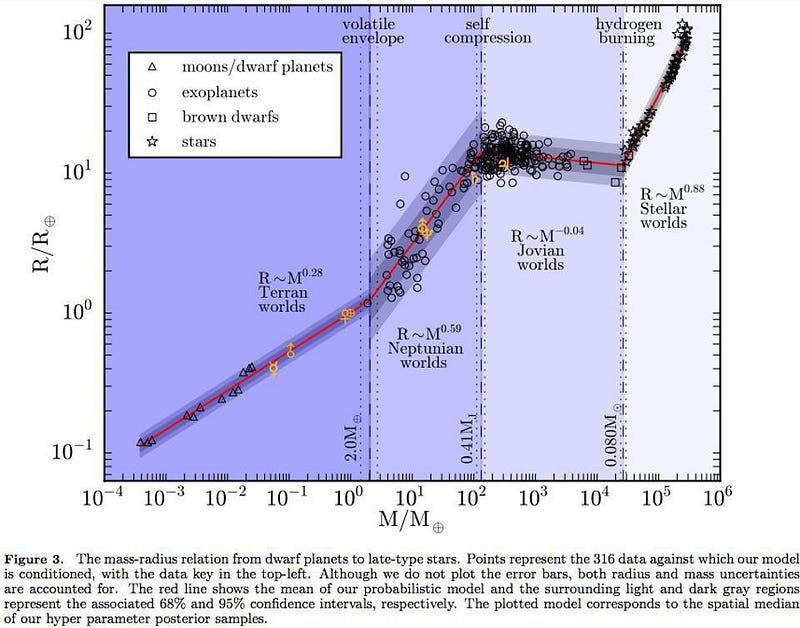
What came as a bit of a surprise to many, however, was where that transition point occurred. Many scientists working on exoplanets — based on no physical motivation in particular — had drawn an imaginary line at about two Earth radii in their minds: below that, and you’re likely to be rocky, above that, and you’re likely to be gas-rich. The simplest way to tell, of course, would be to look at the density of your planet. In our own Solar System, the rocky planets and the gas-rich planets possess enormously different densities, so if you’re two Earth radii and still rocky, you’d expect such a planet to have about eight times the mass of Earth.
But when the data came in, it showed something remarkable: there is a transition between rocky planets and gas-rich planets, but it occurs much, much earlier, at about two Earth masses, or just 1.2 to 1.3 Earth radii. There appears to be some variety in exoplanets above that size/mass, with most of them appearing to be miniature versions of Neptune, but with a few of them, perhaps all the way up to 1.5 or even 1.6 Earth radii, still being rocky. (The majority of those, interestingly enough, are extremely hot as well.)
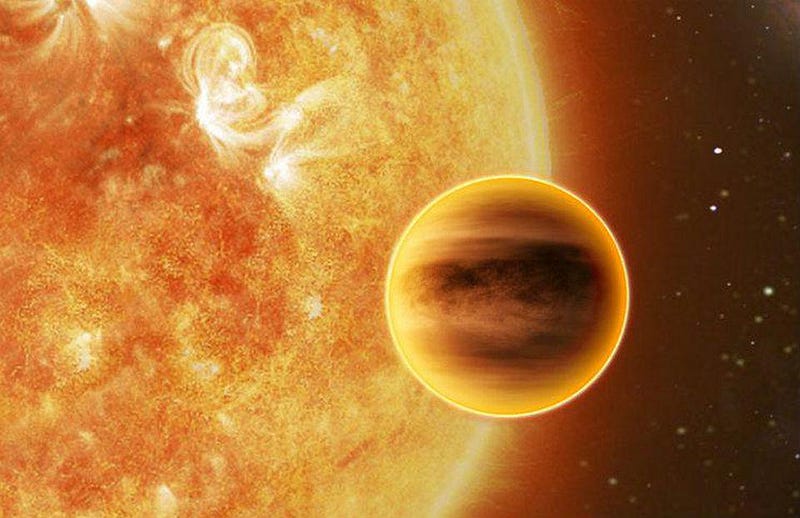
This tells us something remarkable and unexpected to many: Earth, the largest rocky planet in our entire Solar System, is almost as “super” as a rocky planet can get. If you managed to form an Earth-sized planet early on in your Solar System’s history, it would only need to get a little bit larger and more massive before it became capable of hanging onto volatile molecules like ammonia, methane, and even hydrogen and helium. And once you become rich in volatiles, you’re guaranteed to no longer be rocky, but rather more like Neptune, with a large gas envelope around you.
You might start to wonder, however, “hey, even if your world was more like a mini-Neptune, wouldn’t there eventually be a surface if you went down far enough?”
And while the answer is “yes,” that doesn’t mean that the surface is going to be interesting. One of the things we don’t generally appreciate is how efficient large, thick atmospheres are at creating enormous pressure and temperature gradients. Even for the “thinnest” volatile-rich, gassy envelope we anticipate, we’d still experience pressures that are thousands of times what they are on Earth’s surface, and temperatures that reach over 1,000 °C at that surface. While there’s certainly some novel chemistry that happens under those extreme conditions, the only place we’d ever find them on Earth is deep underground in Earth’s mantle, where it’s so hot that the Earth itself would glow in visible light.
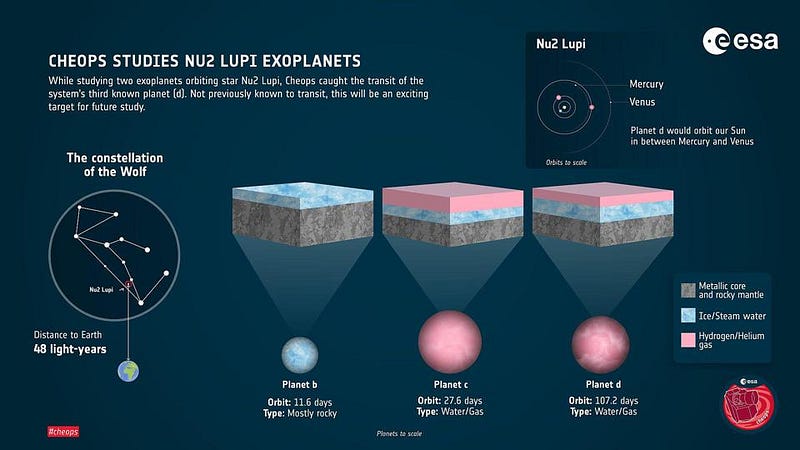
Just a few days ago, the CHEOPS mission put out a paper claiming to detect a “volatile-rich super-Earth,” showcasing just how absurd the term super-Earth actually is. If you’re volatile-rich, you’re a planet with a large gas envelope, not rocky; if you’re significantly larger than Earth, you’ll hold onto a large gas envelope and won’t be rocky.
The truth is that, when exoplanet science was in its infancy, we made a decision to create an entirely new category for the planets we found that didn’t appear to be represented in our Solar System: planets in between the sizes of Earth and Uranus/Neptune. Now that we have the needed data, however, we’ve learned that you can really only get slightly larger than Earth — 50–60% larger at most, and more like 20–30% larger in general — before you’re no longer a rocky planet. In other words, Earth is just about as “super” as rocky planets get.
There is no need, and in fact it’s harmful, to remain wedded to erroneous assumptions that were made in the early days of exploring a new scientific field. As it stands today, it’s already been some ~5 years since we recognized how exoplanet populations were actually distributed; we now have PhDs who entered graduate school when it was already known that almost everything we currently call a “super-Earth” is not a rocky planet at all. Although there’s still much to learn about these exoplanets, including what’s underneath those atmospheres, we know enough about them to know which worlds are rocky and which ones are more like the gas giants we have. Based on that, now is absolutely the proper time to retire the archaic, inaccurate term, “super-Earth.”
Starts With A Bang is written by Ethan Siegel, Ph.D., author of Beyond The Galaxy, and Treknology: The Science of Star Trek from Tricorders to Warp Drive.



